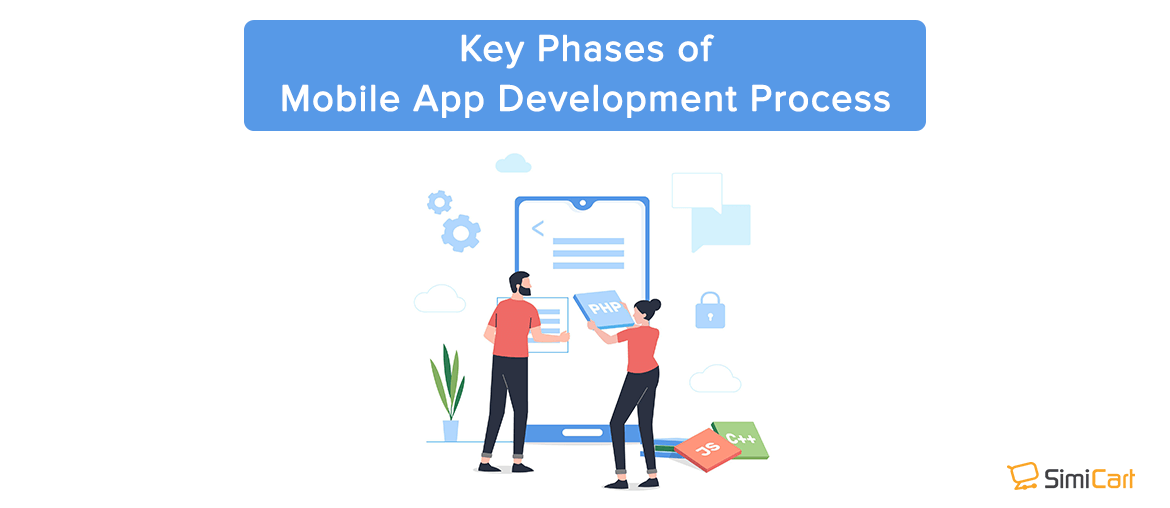Table of contents
The development of mobile apps has thrived in the last decades. It grows together with the mobile device industry, and there is still a lot of space for development.
In 2020, the number of mobile apps exceeded over 3,1 million on Google Play Store and 2 million on Apple App Store (Statista, 2021). There are all kinds of mobile apps to meet people’s demands – for communication, search, navigation, shopping, entertainment, education, health, …
By 2023, worldwide mobile app revenue is projected to reach $935 billion (Statista, 2021).
Businesses can see huge revenue from the mobile app industry, and other advantages a mobile app provides them, so many are trying to jump on this ship. However, creating a mobile app is far from a simple and one-time project.
To build a successful app, a business needs to go through different phases, each is vital to the final product. There are 10 key phases in the mobile app development process, so let’s go through each of them.
1. Idea Generation
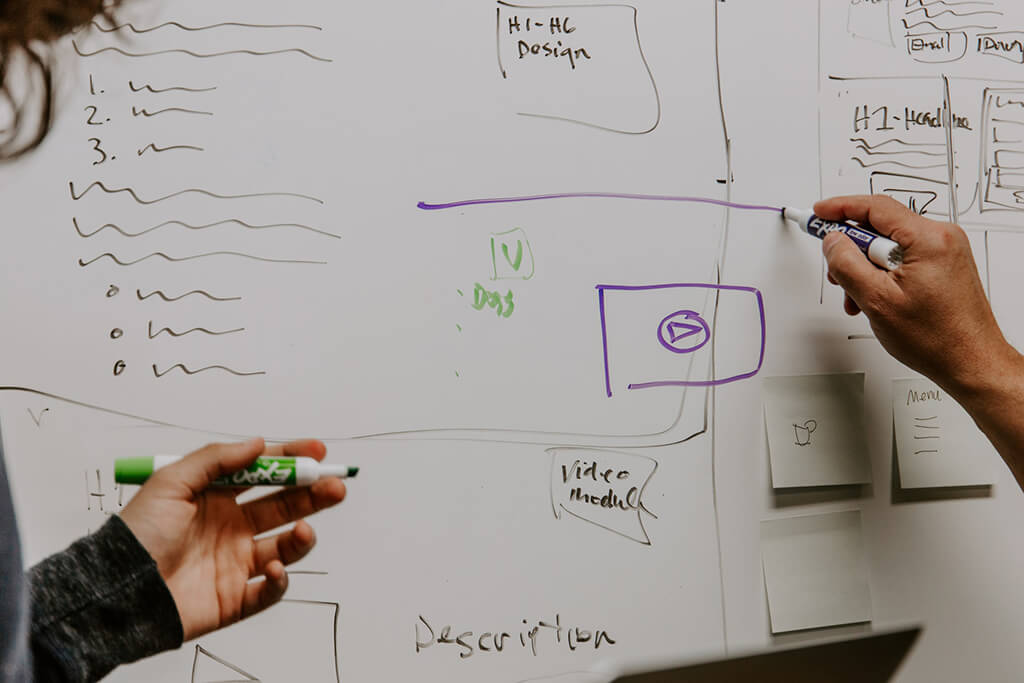
All app development processes start with an idea. Sounds simple and obvious, right?
But if you want to see your app launched and downloaded, this is the base of success. Your idea should go beyond good only in your head, it has to solve real life’s problems. And that takes more than just one question of the app’s purpose.
When forming an app idea, figure out answers to the following questions:
- App’s goal: what is the aim of your app? What is it gonna solve?
- Target audience: who will download the app?
- USP: what features would make your app stand out for the users?
- Investment: how will you allocate your resources – time, money and effort?
- Competitor analysis: Do your competitors have mobile apps? What are their key features?
- Timeframe: when do you want to see the app launched?
- Marketing: how will you promote the app to your target users?
- Maintenance: how will you keep the app performing well and updated?
2. Market Analysis and Strategy Planning

After you’ve your answers in the first phase, it’s time for market analysis and planning your project. These steps are probably the most important part of the entire process. It can prove whether your idea is applicable, and provide helpful insights for later development.
Market Analysis
Some common methods for research including surveys, group or in-depth interviews, focus groups, desk research.
Talk to your customers or potential users to understand their real demands, what features of a mobile app can make them download it, whether they are using a similar app from a competitor, what other opportunities are presented to your business.
Perform desk research on how your competitors are keeping their apps running (or if they have any) and their key features. Besides, see what the trends for your market are, whether a room for a mobile app is available (check out the mobile app stores).
Strategy Planning
Following a thorough analysis stage, it’s time to plan your strategy. Use the data you’ve got to execute your plan.
Identify your goals with SMART (specific, measurable, achievable, realistic, timely) objectives. The more detail and accurate you can be with the objectives, the more effective the development process will be.
Following that, you need to choose your app’s name and solidify the scope of the app’s functionality and allocate your time, money, and other resources. And then there needs to be a strategy for marketing, customer support and app update.
Monetization Strategy
You are introducing a new app for revenue, but how to do it then? There are several approaches to do this:
- In-app advertising: banner ad, interstitial ad, native ad, affiliate ad, rewards ad
- Subscription and freemium: free app download, then users need to pay for premium features.
- In-app purchase: generate money by selling virtual or physical goods from within the app.
- Transaction fees: apps that have a marketplace take transaction fees when users sell items through their platform.
To identify the most appropriate approach, first look at the base of your app. For example, a performing, subscription is excellent for business regarding music or video streaming. In-app purchase is popular with mobile games.
Next, learn from your user’s behavior. Who are they? What do they want? Are they willing to pay for the app? But of course, before they spend money, your app needs to provide a valued experience.
Also, see how your competitors are monetizing and whether they are applying a similar approach for their app.
3. Choosing In-house/Outsource Development Approach
You first need to decide whether an in-house team or an app development company will work for your business and the project scope. Hiring freelancers is usually a go-to option for start-ups and emerging businesses.
To search for a suitable development company, try going for word-of-mouth, searching online and attending conferences.
Technically, a team of 4-10 specialists would be enough to handle a project. But of course, the final number of people in a team depends on the project scope. The team should have a project manager, sales manager, Scrum masters, iOS & Android developers, designers, and QA engineers.
When considering a suitable developer company, evaluate their experience and skillset, ask for a customized solution, discuss the cost and their support service beforehand (especially for the post-launch phase).
4. App Design
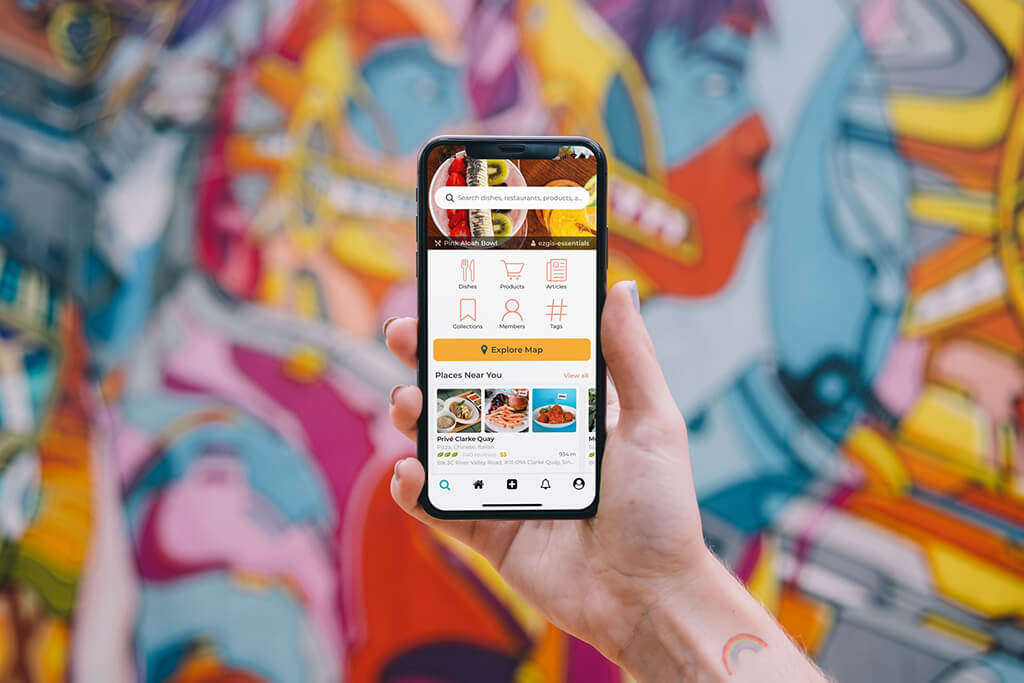
To be successful, your future mobile app should be user-friendly, interactive and engaging, and of course, solve the user’s problem.
A polished app appearance, plus good performance, is the key to win the user’s heart.
Platform Approach
You need to decide your platform approach – will it be a native app, cross-platform or hybrid app?
While native apps allow the delivery of high performance, it may cost you a fortune to build. A native iOS or Android app also possesses significant features that their respective users are familiar with, this will affect how you design the app.
Cross-platform and hybrid apps take less time and cost to be developed and can be more compatible than native apps, but they may provide lower performance.
Creating Wireframes

A wireframe is a rough sketch of how the mobile app will look like. To build wireframes for your app, you’ll first need to have information architecture, user flows and a style guide.
- Information architecture: how the information in the app is organized, including the displayed data and collected data.
- User flow: the entire collection of user interactions throughout your app.
- Design patterns: apply familiar patterns for your app. Both iOS and Android have native design patterns to simplify the design process of developing a user experience for the designers. This is very important if you’re making a native app.
- Style guide: a list of standards for the app, including text font, color scheme, brand logo, …
- App store guideline: incorporate the guidelines from the app store that you plan to launch the app on.
As its purpose is to let you first visualize your app, wireframes don’t have to be heavy on details and focus on designing the user experience. It takes you a pencil and some white paper to make wireframes.
Create a roadmap to identify the relationship between each screen and how your users will navigate through the app in real life. Sketching out wireframes will give you a good view of the app visual, and see where each element should be placed to enhance the user experience.
Making Prototypes
This is the last step of shaping your app before it’s brought to life by the developer team.
A prototype is close to a demo version of your mobile app. It combines the aspects of visual design, interactions of elements, and app functions. Prototypes are very useful in simulating user experience and the expected app workflows.
Making prototypes will be worth your effort. Prototypes can be created with tools like Invision, UXPin, Proto.io, and Figma. Experience with several ideas for prototypes to learn the best structure for your app.
You can also involve some stakeholders, getting them to try out the prototypes. It’s similar to what you have done in the research phase but with a real app version this time. Find out what they like and don’t like, where the errors happen, what needs to be changed,…
5. Project Management
Milestones
You’ll have a lot on your plate when developing the app, so there should be some milestones to track the process, regardless of your management method.
Defining milestones helps to accelerate and control your development process. The entire project will be broken down into significant tasks with respective goals. Every task will be completed within a significant timeframe. By checking the milestones, you can see how far you’ve progressed.
Management Methodologies
To complete the development project effectively, you need to establish a suitable management method.
Some of the common methods are:
- Kanban project management: small teams, higher flexibility, task prioritization
- Scrum project management: team less than 7 members, high flexibility, continuous quality checks.
- Agile project management: projects with complexity, high adaptability, repeated feedback.
- Lean project management: projects that need to deliver improved quality, eliminated ‘waste’ from the system.
- Waterfall project management: large projects, tough deadlines.
Useful project management tools: Trello, Basecamp, Asana, Zoho, Jira.
Scrum project management

Scrum project management is probably the most popular and cost-effective out of the mentioned approaches.
There will be a list of important app features, creating a product backlog. Each feature will be assigned a sprint – a set timeframe it needs to be completed.
The developer team will select a feature, find out the issues, come up with solutions and choose the best one, quickly build prototypes, get the user’s feedback and then improve.
Each sprint lasts from one to four weeks in length, and the developer team will continue with the tasks until the app’s core features are well designed.
6. App Development

Selecting Technology Stack
Choosing the right technology stack will affect your app’s performance and its scalability when growing in the future. A technology stack is made up of three parts:
- Backend
Database and server-side objects are required to support the performance and scalability of a mobile app. If you are using an existing backend platform, modifications may be needed to support the desired app functionality.
You can utilize almost any web programming language and database for the back-end.
- API
An Application Programming Interface (API) is a communication method between the app and a back-end server/database, and also between the app with the OS components and existing software tools/systems in use by your business.
- Mobile App Frontend
Everything a user sees and interacts with on the app screen (usually referred to as the client-side) is considered a part of frontend development. The frontend is used to build an interface using JavaScript, HTML, and CSS.
Creating an MVP
Building an MVP (Minimum Viable Product) is a great approach when developing your app.
An MVP is essentially the bare bones of your app. Decide the app’s core functionalities, and ensure they are built perfectly. An MVP has just enough of the core features to complete the simplest functionalities and use cases.
One or two months into the development project, you may lose sight of the core essentials, and want to add more features into the app than it needs at the moment. So it’s best to create an MVP first – an app that can complete its core mission, you can add in features or designs that make the app more engaging later by gathering feedback from users. This allows you to understand and provide the right desired features for users.
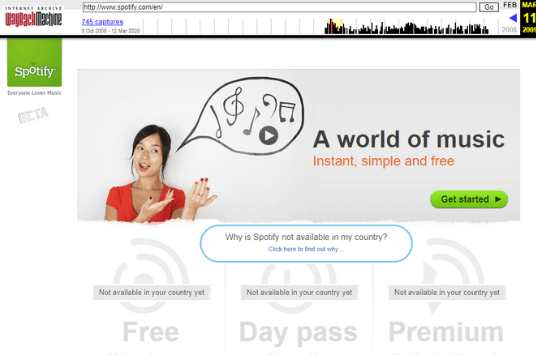
This is how apps like Spotify, Airbnb and Uber have succeeded – from an MVP to being one of the most popular apps worldwide.
7. Quality Assurance
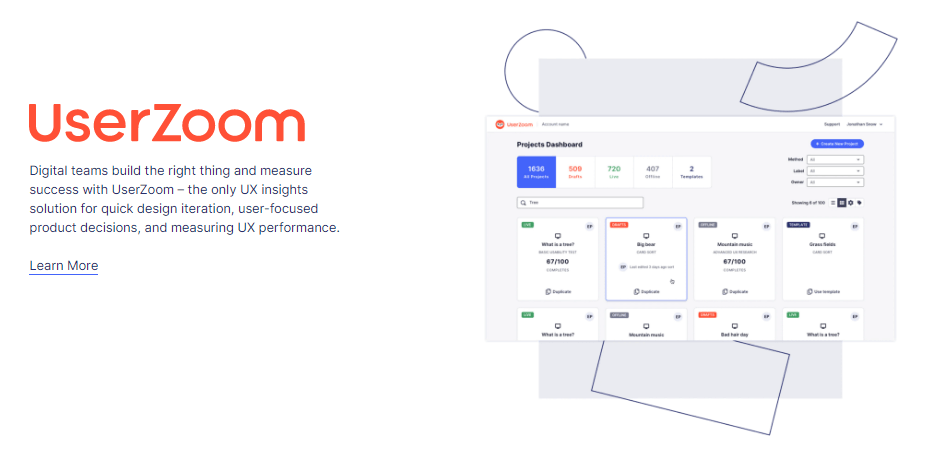
Types of Quality Assurance Tests
- Functional testing
The purpose is to ensure that the functions work properly and users can interact with your app smoothly. Functional testing can be broken down into system testing (the app working as a whole), and unit testing (individual functions of the app operating correctly).
If you are building an app for iOS and Android mobile platforms, both versions of the app should be tested.
- UI testing
The testing is to make sure that your application’s graphical user interface meets all the needed specifications.
- Performance testing
There are several types of performance testing: load testing, stress testing, stability testing, volume testing, concurrency testing.
A common situation is an app takes longer to respond when there are too many users, causing it to receive negative feedback. So get your app’s performance tested out with the maximum number of users registered.
- Compatibility testing
New mobile devices are rolled out every few months, with different screen sizes, hardware and firmware. So your app may perform beyond excellent for some devices, but not with the others.
Thus, it’s useful to test your mobile app on multiple mobile devices or device simulators to ensure the smooth working of your app for all users.
- Security testing
App security is one of the biggest concerns of users when they install an app. Today, a mobile device tends to hold a lot of personal data, and no one would want their information leaked. Even the biggest players in the mobile app industry with a secured system can be attacked.
This step validates the security concern of your app. The app should open using secured protocols and meet compliance standards, protecting sensitive data from unauthorized and malicious users.
- Usability testing
See how real users interact and review your app.
Your mobile app needs to be user-friendly and intuitive, and this step is to guarantee the final app version will meet such requirements.
There should be at least 5 people joining the usability testing. The participants need to have the traits of your target users. But depending on the complexity of your app and your budgets, the number of users may vary. You can use testing tools to ensure the data results would provide helpful insight into the user experience.
Recommended Quality Assurance Practices
- Have a professional team of testers for the right QA strategy
- Conduct multiple testing approaches
- Document the test results for better insight
- Test the app on older operating systems
8. Deployment

After the testing, your mobile app is ready to be launched.
You need to have a developer account to submit the app on Apple App Store and/or Google Play Store (or other stores). An app’s release in the app store requires preparing metadata including the app’s title; description; category; keywords; launch icon; app store screenshots.
The submitted app will then go through a review process. Each app store has a different review process, so that the publication of your app may take a few days or longer.
9. Marketing
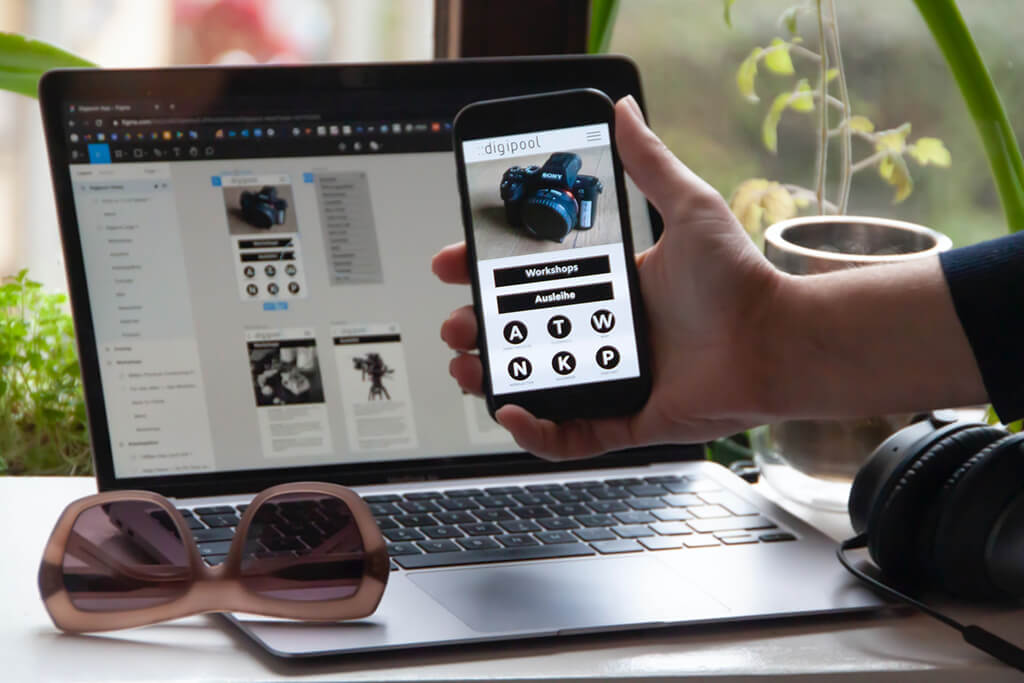
Prepare a good strategy to let your potential users know about the app. Use the available channels to give your app a great push from the start – social media platforms, advertisements, QR codes, guest blogging, and other approaches that suit your brand. No app could succeed without a proper marketing strategy, despite how useful it is.
In the long run, marketing will also keep your users engaged. Inform them in case of new app features, updated versions, promotions, or changes that can affect your user’s rights.
On the other hand, don’t forget about ASO (App Store Optimization). It’s essential to optimize your app to maximize its visibility to potential users and ultimately generate revenue from the app. You can optimize the app search through the app’s name, description, icon, screenshots and preview video.
10. Monitoring & Update
App Performance Analysis
Make sure you monitor the performance of your app closely after its launch. You need to prevent app crashes, bugs or other errors before they happen.
Also, by analyzing essential metrics, you’ll understand how the app is being used and can see where to invest future efforts.
Customer Feed
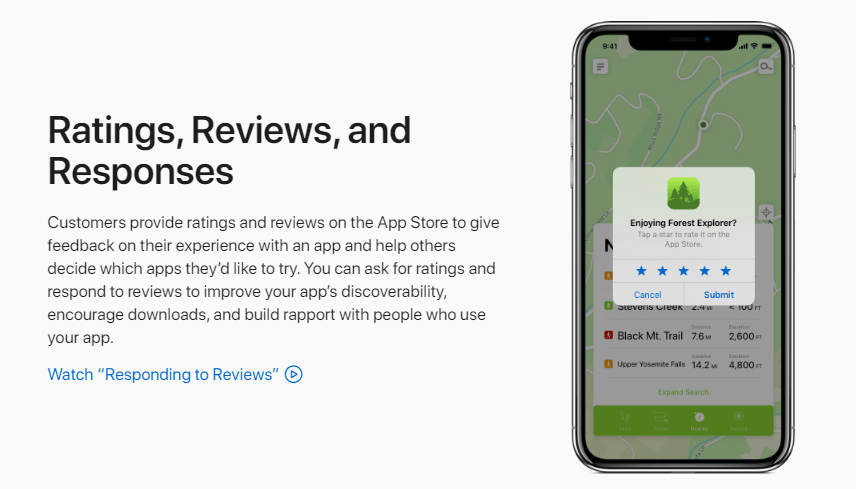
Always keep track of customer’s feedback. The feedback says a lot about your app’s performance and reveals space for improvements.
Some businesses may overlook the importance of feedback, but the app growth is gonna struggle. Users would not want to use an app with bad reviews or one that shows its lack of user support. Answer customer’s questions and contact them if they encounter issues with your app.
You can let users reach out to you through:
- Feedback survey
- Social media platforms
- In-app survey
- Customer calls
- Email feedback
- Support requests
Update
To stay on top of the game, your business will need to release updated versions of the app. Make sure you have taken into account these matters for the post-launch – who’s going to fix the bugs and responsible for developing new features/ versions.
Takeaway notes
You will need to go through 10 phases of mobile app development:
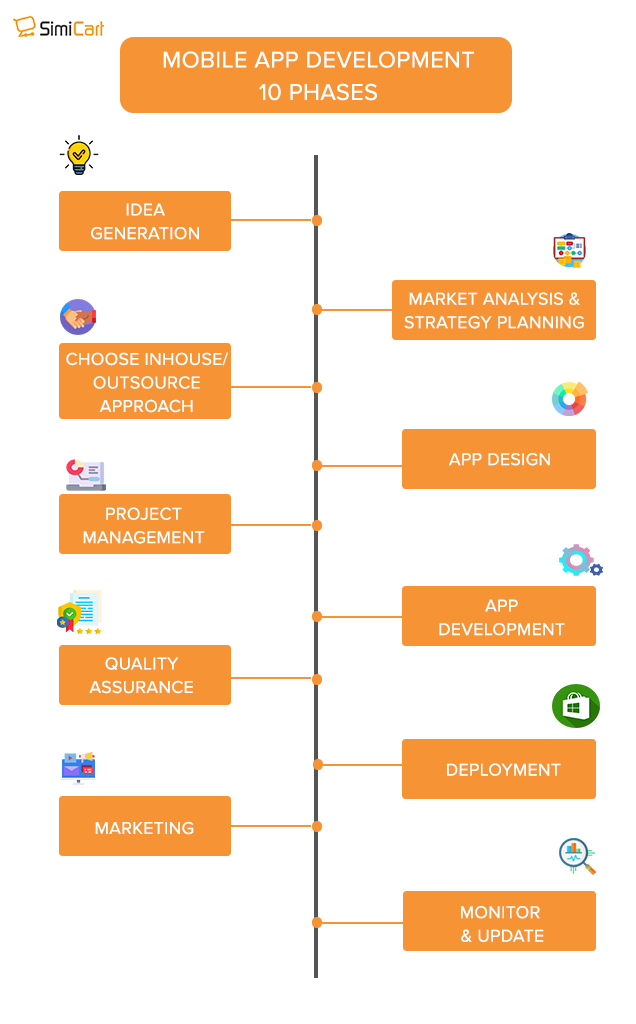
Tips
Some useful tips are recommended to develop a successful mobile app:
- Know your target users: have a clear insight of your users – age, gender, location, behaviors,…
- Keep up with the latest app trends: it helps to know what are the latest trends in the tech world so that you may have the best choice of technology used for your app.
- Optimize your app: ensure that your app performs smoothly and doesn’t take up much of a user’s mobile storage.
- Provide offline availability: in many cases, smartphone users may have difficulty accessing the internet. So if your app can perform without the internet, even with just a few features, it would be useful in the long run.

